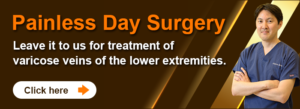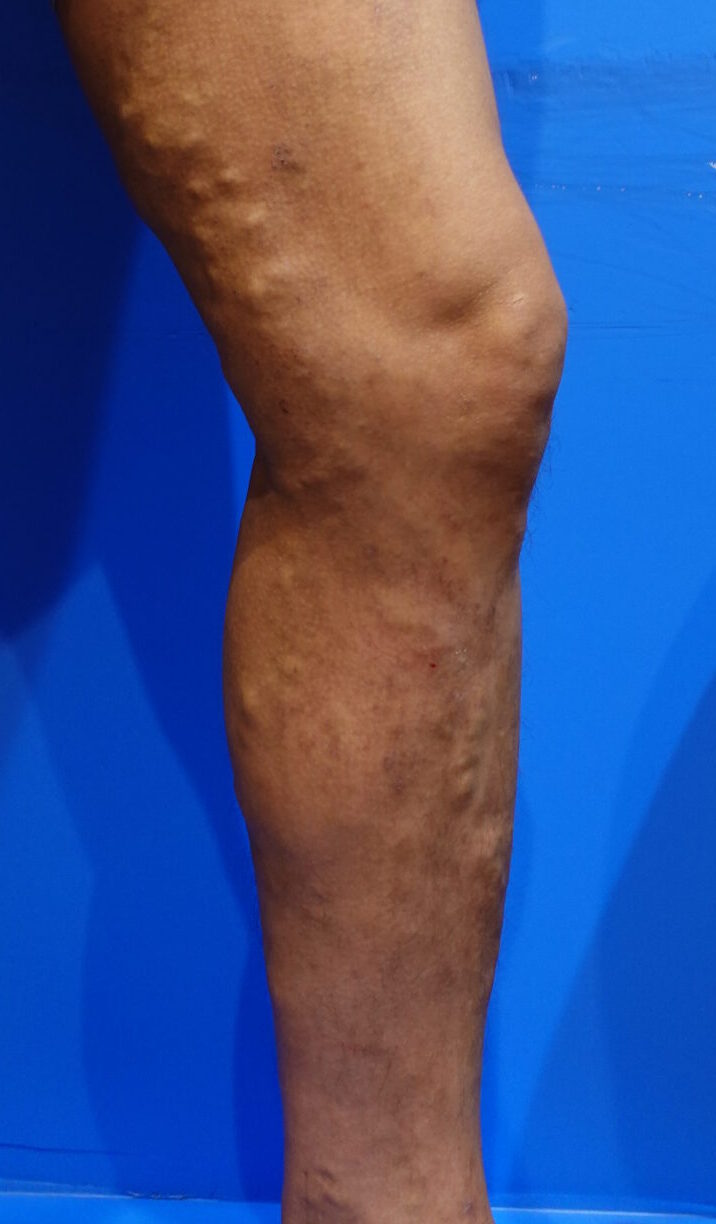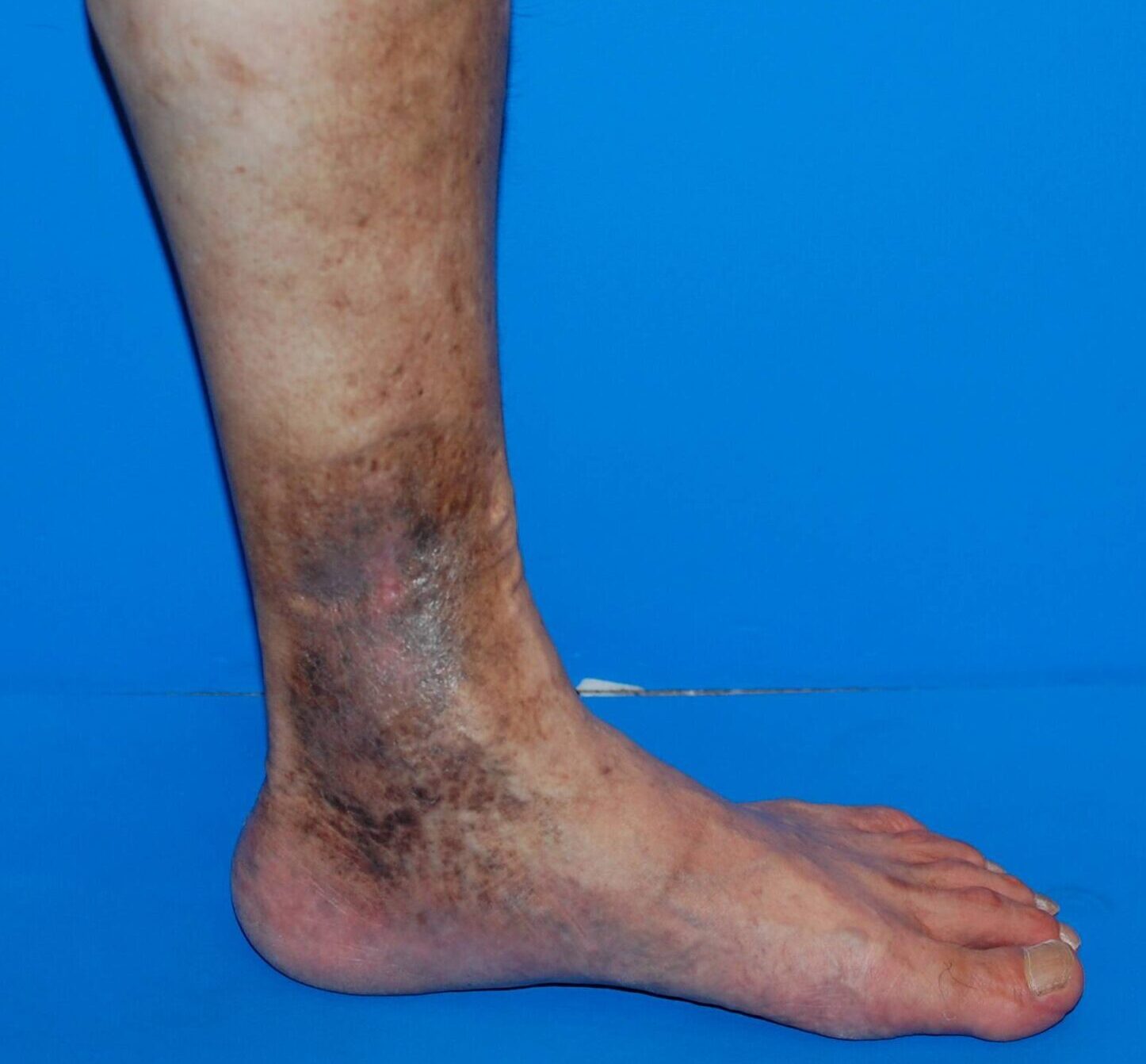What Are Varicose Veins? Causes and Mechanisms
Supervised by Dr. Akira Saito, Director of The Varicose Vein Clinic TOKYO (Meguro Surgical Clinic, Tokyo)
What Are Varicose Veins?
Varicose veins are a condition in which the veins in the legs bulge out like a lump due to blood pooling inside the veins.
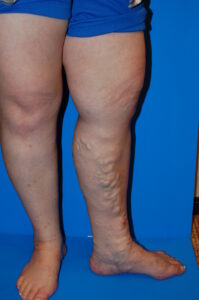
Why Do Varicose Veins Occur?
Blood flow begins at the heart. Blood pumped from the heart flows through arteries rich in oxygen and nutrients, making it bright red. On the way back, waste-rich blood from the legs returns through the veins and appears dark in color. Arteries serve like water pipes, and veins work like sewers.
Veins return blood to the heart against gravity. This requires two key mechanisms:
1. The Pumping Action of Leg Muscles
When your leg muscles contract, they compress the veins and push blood upward toward the heart—just like squeezing a tube of toothpaste or mayonnaise. This is why the feet are called the “second heart,” and the calf muscles play a particularly important role.
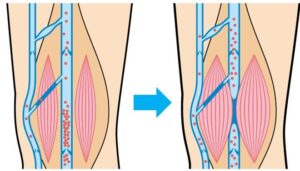
2. The Role of Venous Valves
Veins have valves every few centimeters that prevent blood from flowing backward. If these valves fail due to long hours of standing, pregnancy, childbirth, or genetics, blood starts to pool, leading to congestion in the veins.
Causes of Varicose Veins
1. Standing Work or Prolonged Sitting
If you work as a cook, hairdresser, security guard, dry cleaner, or in any job that requires standing still for long periods, the leg muscle pump won’t work effectively. This causes blood to pool and increases pressure on the valves, making it difficult for them to close properly.
Even for desk workers or those who remain in the same position for long hours, the lack of leg movement leads to similar issues, although to a lesser degree.
2. Pregnancy
One in two women who have given birth develop varicose veins. This is thought to be due to:
- Increased maternal blood volume
- Effect of female hormones
- Compression of veins by the uterus
a. Increased Maternal Blood Volume
During pregnancy, a woman’s blood volume increases by 40–50% to support the baby. This causes veins throughout the body to swell, especially those in the legs due to gravity.
b. Influence of Female Hormones
Estrogen levels increase around 100-fold during pregnancy. Estrogen relaxes blood vessels, causing veins to expand toward the later stages of pregnancy.
c. Compression by the Uterus
As the fetus grows, the uterus enlarges and compresses the pelvic veins. This obstructs blood flow from the legs and causes congestion, like an hourglass. While veins usually shrink after delivery, some remain enlarged and lead to varicose veins, especially after a second pregnancy.
3. Heredity
If both parents have varicose veins, there is a 90% chance of inheritance. If only one parent has it, the probability is about 25% for sons and 60% for daughters.
4. Aging
As people age, the elastic membranes and smooth muscle in the vein walls degenerate, making the veins weaker. This leads to blood pooling and vein expansion, especially during prolonged standing.
5. Obesity
Severe obesity increases the likelihood of developing varicose veins, especially in women. It’s not the strongest factor, but still contributes.
6. Constipation
Straining during bowel movements increases abdominal pressure, which also puts pressure on the pelvic veins and venous valves, worsening their function.
7. Gender and Hormones
In women, progesterone rises during menstruation and pregnancy, which relaxes vein walls and valves—making women more prone to varicose veins than men.
Consult a Specialist
If you’re experiencing symptoms or risk factors for varicose veins, don’t wait. Early treatment can reduce discomfort and prevent progression.
Minimally Invasive Laser Treatment at The Varicose Vein Clinic TOKYO
At The Varicose Vein Clinic TOKYO, we specialize in endovenous laser ablation using a catheter-based technique. This modern treatment requires no skin incision or stitches, eliminating the need for suture removal and significantly reducing downtime.
Most patients are able to return to their normal daily activities—including walking, working, and household chores—as early as the day after surgery. This safe, precise, and minimally invasive approach makes it a preferred option for those seeking fast recovery with minimal discomfort.
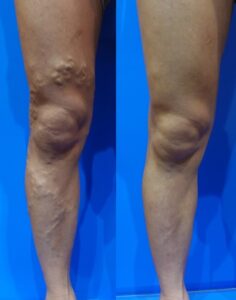
Visible Improvement Following Endovenous Laser Ablation – Before and After
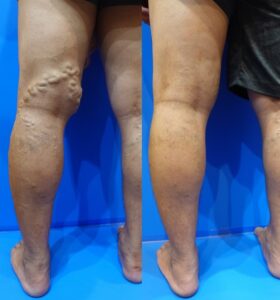
Visible Improvement Following Endovenous Laser Ablation – Before and After
Click here to contact our specialists at The Varicose Vein Clinic TOKYO
